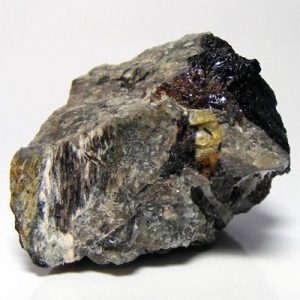Canasite
Canasite is a mineral that is relatively rare is commonly discovered as brownish yellow to yellowish green aggregates in Charoite. When contrasted against swirling purple Charoite it creates stunning cabochons. The picture above shows yellow Canasite connected with purple Charoite, orange Tinaksite and aegirine that is black. Canasite is extremely rare as a gem that is faceted.
Canasite is found at only three localities into the worldwide world, and all three have been in Russia; on Mts. Yukspor and Rasvumchorr, Khibiny massif, Kola Peninsula, and in the Murun massif, southwest of Olekminsk, Yakutia, Russia.
| Chemical Formula: | Na4K2Ca5Si12O30(OH)3F |
| Sodium Potasium Calcium Silicate Hydroxide Fluoride | |
| Molecular Weight: | 1,257.57 gm |
| Composition: | Potassium | 6.22 % | K | 7.49 % | K2O |
| Sodium | 7.31 % | Na | 9.86 % | Na2O | |
| Calcium | 15.93 % | Ca | 22.30 % | CaO | |
| Silicon | 26.80 % | Si | 57.33 % | SiO2 | |
| Hydrogen | 0.24 % | H | 2.15 % | H2O | |
| Oxygen | 41.98 % | O | |||
| Fluorine | 1.51 % | F | 1.51 % | F | |
| — | — % | F | —0.64 % | —O=F2 | |
| 100.00 % | 100.00 % | = TOTAL OXIDE |
| Crystallography: | Monoclinic – Prismatic |
| Crystal Habit: | As crystals, to 10 cm; in platy aggregates, to 20 cm; also granular. |
| Twinning: | Polysynthetic, the twinning plane at an angle of 8° to the less perfect cleavage. |
| Cleavage: | One, Very Perfect; another, Perfect, at 118° to the first. |
| Fracture: | Splintery, breaks into long acute-angled or wedge-shaped pieces. |
| Tenacity: | Brittle |
| Moh’s Hardness: | 6.0 |
| Density: | 2.707 (g/cm3) |
| Luminescence: | None |
| Radioactivity: | Barely Detectable; GRapi = 89.32 (Gamma Ray American Petroleum Institute Units) |
| Color: | Brownish Yellow, Green Yellow, Light Green |
| Transparency: | Transparent to Translucent |
| Luster: | Vitreous |
| Refractive Index: | 1.534 – 1.543 Biaxial ( – ) |
| Birefringence: | 0.0090 |
| Dispersion: | Weak; r > v |
| Pleochroism: | None |


